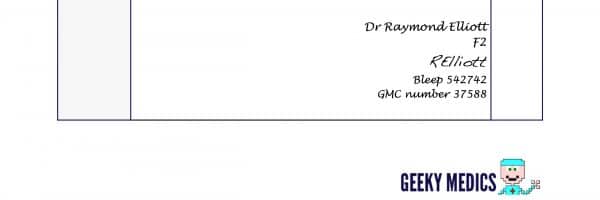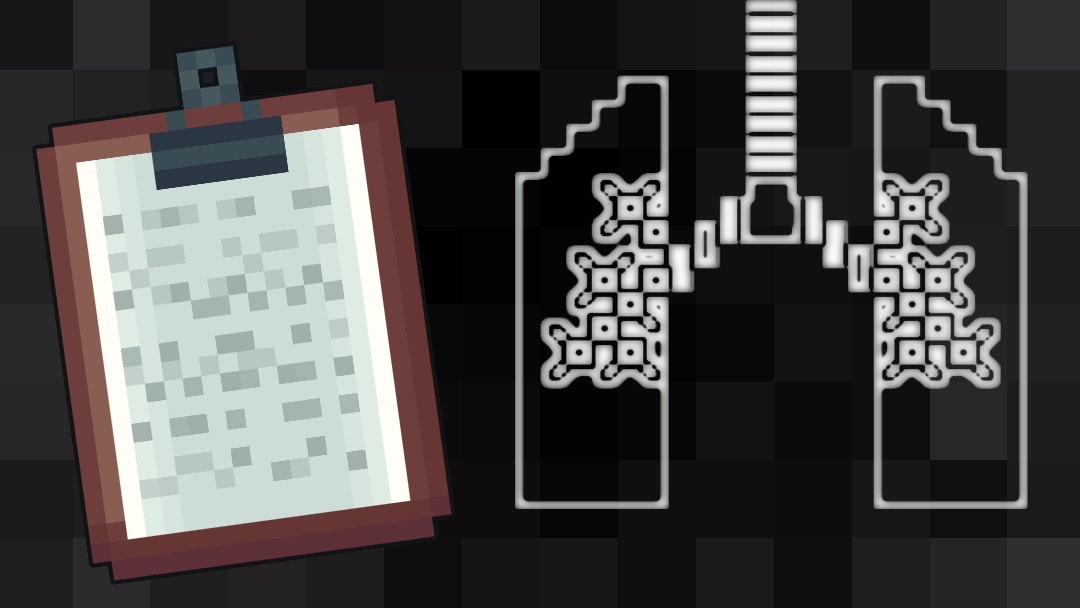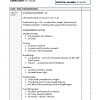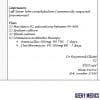- 📖 Geeky Medics OSCE Book
- ⚡ Geeky Medics Bundles
- ✨ 1300+ OSCE Stations
- ✅ OSCE Checklist PDF Booklet
- 🧠 UKMLA AKT Question Bank
- 💊 PSA Question Bank
- 💉 Clinical Skills App
- 🗂️ Flashcard Collections | OSCE, Medicine, Surgery, Anatomy
- 💬 SCA Cases for MRCGP
To be the first to know about our latest videos subscribe to our YouTube channel 🙌
In addition to knowing how to interpret a chest X-ray (CXR), it’s also important to understand how to appropriately document the findings of a CXR in the notes. This guide provides a structured approach to documenting the findings of a CXR in a patient’s notes.
Documentation basics
Before we discuss how to document a CXR, we need to cover the basics that apply to all documentation in a patient’s notes. You can check out our detailed guide to writing in the notes for more information.
What should I use to write with?
You need to use a pen with black ink, as this is the most legible if notes are photocopied.
Patient details
For every new sheet of paper your first task should be to document at least three key identifiers for the relevant patient:
- Full name
- Date of birth
- Unique patient identifier
- Home address
If a patient label containing at least three identifiers is available, then this can be used instead of writing out the information manually.
Location details
You should indicate the patient’s current location on the continuation sheet:
- Hospital
- Ward

Beginning your entry in the notes
At this point, you should already be holding a pen with black ink and you should have ensured the continuation sheet has at least three key patient identifiers at the top.
The next documentation steps include:
1. Adding the date and time (in 24-hour format) of your entry.
2. Writing your name and role as an underlined heading.
3. Adding your entry in the notes below this heading (see the next section for details).

Documenting the CXR results in the notes
1. Document the time and date that the CXR was performed as this may be significantly different from the time you are documenting.
2. Write the indication for the CXR (e.g. “productive cough, shortness of breath and fever – possible community-acquired pneumonia”)
3. Document your interpretation of the CXR:
- Image quality:
- Rotation
- Inspiration
- Projection
- Airway:
- Trachea
- Carina and bronchi
- Hilar structures
- Breathing:
- Lung fields
- Pleura
- Cardiac:
- Heart size
- Heart borders
- Diaphragm:
- Position/shape
- Costophrenic angles
- Everything else:
- Mediastinal contours
- Bones
- Tubes/valves/devices
4. Document your overall impression of the CXR (e.g. “left lower lobe consolidation”).
5. Document your plan based on the CXR findings.
Completing the entry in the notes
At the end of your entry to need to include the following:
- Your full name
- Your grade/role (e.g. F2/Medical Registrar)
- Your signature
- Your professional registration number (e.g. GMC number)
- Your contact number (e.g. phone/bleep)







